16 Gender, Sex, and Sexuality
“Gender and Sexuality”
from
Perspectives: An Open Introduction to Cultural Anthropology, 2nd Edition
Carol C. Mukhopadhyay (carol.mukhopadhyay@sjsu.edu)
Tami Blumenfield(tami.blumenfield@gmail.com)
Susan Harper (susanharperteaches@gmail.com)
Abby Gondek (abbygondek@outlook.com)
INTRODUCTION: SEX AND GENDER ACCORDING TO ANTHROPOLOGISTS
Anthropologists[1] are fond of pointing out that much of what we take for granted as “natural” in our lives is actually cultural—it is not grounded in the natural world or in biology but invented by humans.[2] Because culture is invented, it takes different forms in different places and changes over time in those places. Living in the twenty-first century, we have witnessed how rapidly and dramatically culture can change, from ways of communicating to the emergence of same-sex marriage. Similarly, many of us live in culturally diverse settings and experience how varied human cultural inventions can be.
We readily accept that clothing, language, and music are cultural—invented, created, and alterable—but often find it difficult to accept that gender and sexuality are not natural but deeply embedded in and shaped by culture. We struggle with the idea that the division of humans into two and only two categories, “male” and “female,” is not universal, that “male” and “female” are cultural concepts that take different forms and have different meanings cross-culturally. Similarly, human sexuality, rather than being simply natural is one of the most culturally significant, shaped, regulated, and symbolic of all human capacities. The concept of humans as either “heterosexual” or “homosexual” is a culturally and historically specific invention that is increasingly being challenged in the United States and elsewhere.
Part of the problem is that gender has a biological component, unlike other types of cultural inventions such as a sewing machine, cell phone, or poem. We do have bodies and there are some male-female differences, including in reproductive capacities and roles, albeit far fewer than we have been taught. Similarly, sexuality, sexual desires and responses, are partially rooted in human natural capacities. However, in many ways, sexuality and gender are like food. We have a biologically rooted need to eat to survive and we have the capacity to enjoy eating. What constitutes “food,” what is “delicious” or “repulsive,” the contexts and meanings that surround food and human eating—those are cultural. Many potentially edible items are not “food” (rats, bumblebees, and cats in the United States, for example), and the concept of “food” itself is embedded in elaborate conventions about eating: how, when, with whom, where, “utensils,” for what purposes? A “romantic dinner” at a “gourmet restaurant” is a complex cultural invention.
In short, gender and sexuality, like eating, have biological components. But cultures, over time, have erected complex and elaborate edifices around them, creating systems of meaning that often barely resemble what is natural and innate. We experience gender and sexuality largely through the prism of the culture or cultures to which we have been exposed and in which we have been raised.
In this chapter, we are asking you to reflect deeply on the ways in which what we have been taught to think of as natural, that is, our sex, gender, and our sexuality, is, in fact, deeply embedded in and shaped by our culture. We challenge you to explore exactly which, if any, aspects of our gender and our sexuality are totally natural.
One powerful aspect of culture, and a reason cultural norms feel so natural, is that we learn culture the way we learn our native language: without formal instruction, in social contexts, picking it up from others around us, without thinking. Soon, it becomes deeply embedded in our brains. We no longer think consciously about what the sounds we hear when someone says “hello” mean unless we do not speak English. Nor is it difficult to “tell the time” on a “clock” even though “time” and “clocks” are complex cultural inventions.
The same principles apply to gender and sexuality. We learn very early (by at least age three) about the categories of gender in our culture—that individuals are either “male” or “female” and that elaborate beliefs, behaviors, and meanings are associated with each gender. We can think of this complex set of ideas as a gender ideology or a cultural model of gender.All societies have gender ideologies, just as they have belief systems about other significant areas of life, such as health and disease, the natural world, and social relationships, including family. For an activity related to this section, see Activity 1 in the Teaching Resources of the Perspectives website.
FOUNDATIONS OF THE ANTHROPOLOGY OF GENDER
Gender Ideologies, Biology, and Culture
Gender vs. Sex
Words can reveal cultural beliefs. A good example is the term “sex.” In the past, sex referred both to sexuality and to someone’s biologic sex: male or female. Today, although sex still refers to sexuality, “gender” now means the categories male, female, or increasingly, other gender possibilities. Why has this occurred?
The change in terminology reflects profound alterations in gender ideology in the United States (and elsewhere). In the past, influenced by Judeo-Christian religion and nineteenth and twentieth century scientific beliefs, biology (and reproductive capacity) was literally considered to be destiny. Males and females, at least “normal” males and females, were thought to be born with different intellectual, physical, and moral capacities, preferences, tastes, personalities, and predispositions for violence and suffering.[3]
Ironically, many cultures, including European Christianity in the Middle Ages, viewed women as having a strong, often “insatiable” sexual “drive” and capacity. But by the nineteenth century, women and their sexuality were largely defined in reproductive terms, as in their capacity to “carry a man’s child.” Even late-twentieth-century human sexuality texts often referred only to “reproductive systems,” to genitals as “reproductive” organs, and excluded the “clitoris” and other female organs of sexual pleasure that had no reproductive function. For women, the primary, if not sole, legitimate purpose of sexuality was reproduction.[4]
Nineteenth and mid-twentieth century European and U.S. gender ideologies linked sexuality and gender in other ways.[5] Sexual preference—the sex to whom one was attracted—was “naturally” heterosexual, at least among “normal” humans, and “normal,” according to mid-twentieth century Freudian-influenced psychology, was defined largely by whether one adhered to conventional gender roles for males and females. So, appropriately, “masculine” men were “naturally” attracted to “feminine” women and vice versa. Homosexuality, too, was depicted not just as a sexual preference but as gender-inappropriate role behavior, down to gestures and color of clothing.[6] This is apparent in old stereotypes of gay men as “effeminate” (acting like a female, wearing “female” fabrics such as silk or colors such as pink, and participating in “feminine” professions like ballet) and of lesbian women as “butch” (cropped hair, riding motorcycles, wearing leather—prototypical masculinity). Once again, separate phenomena—sexual preference and gender role performance—were conflated because of beliefs that rooted both in biology. “Abnormality” in one sphere (sexual preference) was linked to “abnormality” in the other sphere (gendered capacities and preferences).
In short, the gender and sexual ideologies were based on biological determinism. According to this theory, males and females were supposedly born fundamentally different reproductively and in other major capacities and preferences and were “naturally” (biologically) sexually attracted to each other, although women’s sexual “drive” was not very well developed relative to men’s and was reproductively oriented.
Rejecting Biological Determinism
Decades of research on gender and sexuality, including by feminist anthropologists, has challenged these old theories, particularly biological determinism. We now understand that cultures, not nature, create the gender ideologies that go along with being born male or female and the ideologies vary widely, cross-culturally. What is considered “man’s work” in some societies, such as carrying heavy loads, or farming, can be “woman’s work” in others. What is “masculine” and “feminine” varies: pink and blue, for example, are culturally invented gender-color linkages, and skirts and “make-up” can be worn by men, indeed by “warriors.” Hindu deities, male and female, are highly decorated and difficult to distinguish, at least by conventional masculinist U.S. stereotypes.
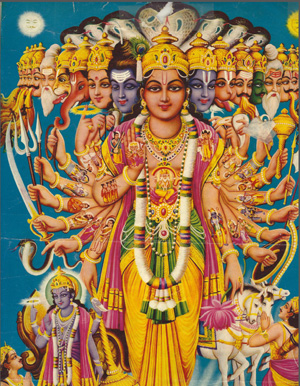
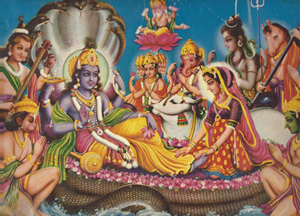
Women can be thought of as stronger (“tougher,” more “rational”) than men. Phyllis Kaberry, an anthropologist who studied the Nsaw of Cameroon in the 1940s, said males in that culture argued that land preparation for the rizga crop was “a woman’s job, which is too strenuous for the men” and that “women could carry heavy loads because they had stronger foreheads.”[7] Among the Aka who live in the present-day Central African Republic, fathers have close, intimate, relationships with infants, play major roles in all aspects of infant-care, and can sometimes produce breast milk.[8] As for sexual desires, research on the human sexual response by William H. Masters and Virginia E. Johnson established that men and women have equal biological capacities for sexual pleasure and orgasm and that, because males generally ejaculate simultaneously with orgasm, it is easier for women than men to have multiple orgasms.[9]
Gender: A Cultural Invention and a Social Role
One’s biologic sex is a different phenomenon than one’s gender, which is socially and historically constructed.[10] Gender is a set of culturally invented expectations and therefore constitutes a role one assumes, learns, and performs, more or less consciously. It is an “identity” one can in theory choose, at least in some societies, although there is tremendous pressure, as in the United States, to conform to the gender role and identity linked to your biologic sex. This is a profound transformation in how we think about both gender and sexuality. The reality of human biology is that males and females are shockingly similar.[11] There is arguably more variability within than between each gender, especially taking into account the enormous variability in human physical traits among human populations globally.[12]
The Gender Binary and Beyond
We anthropologists, as noted earlier, love to shake up notions of what is “natural” and “normal.” One common assumption is that all cultures divide human beings into two and only two genders, a binary or dualistic model of gender. However, in some cultures gender is more fluid and flexible, allowing individuals born as one biologic sex to assume another gender or creating more than two genders from which individuals can select. Examples of non-binary cultures come from pre-contact Native America. Anthropologists such as Ruth Benedict long ago identified a fairly widespread phenomenon of “two-spirit” people, individuals who do not comfortably conform to the gender roles and gender ideology normally associated with their biologic sex. Among Zuni people of New Mexico, beginning in the pre-contact era which was a relatively gender-egalitarian horticultural society for example, individuals could choose an alternative role of “not-men” or “not-women.” A two-spirited Zuni man would do the work and wear clothing normally associated with females, having shown a preference for female-identified activities and symbols at an early age. In some, but not all cases, they would eventually marry a man. Early European ethnocentric reports often described it as a form of homosexuality. Anthropologists suggested more-complex motivations, including dreams of selection by spirits, individual psychologies, biological characteristics, and negative aspects of male roles (e.g., warfare). Most significantly, these alternative gender roles are acceptable, publicly recognized, and sometimes venerated.[13]
Less is known about additional gender roles available to biological women, although stories of “manly hearted women” suggest a parallel among some Native American groups. For example, a Kutenai woman known to have lived in 1811 was originally married to a French-Canadian man but then returned to the Kutenai and assumed a male gender role, changing her name to Kauxuma nupika (Gone-to-the-Spirits), becoming a spiritual prophet, and eventually marrying a woman.[14]
A well-known example of a non-binary gender system is found among the Hijra in India. Often called a third gender, these individuals are usually biologically male but adopt female clothing, gestures, and names; eschew sexual desire and sexual activity; and go through religious rituals that give them certain divine powers, including blessing or cursing couples’ fertility and performing at weddings and births. Hijra may undergo voluntary surgical removal of genitals through a “nirvan” or rebirth operation. Some hijra are males born with ambiguous external genitals, such as a particularly small penis or testicles that did not fully descend.[15]
Research has shown that individuals with ambiguous genitals, sometimes called “intersex,” are surprisingly common. Martha Ward and Monica Edelstein estimate that such intersex individuals constitute five percent of human births.[16] So what are cultures to do when faced with an infant or child who cannot easily be “sexed?” Some cultures, including the United States, used to force children into one of the two binary categories, even if it required surgery or hormone therapy. But in other places, such as India and among the Isthmus Zapotec in southern Oaxaca, Mexico, they have instead created a third gender category that has an institutional identity and role to perform in society.[17]
These cross-cultural examples demonstrate that the traditional rigid binary gender model in the United States is neither universal nor necessary. While all cultures recognize at least two biological sexes, usually based on genitals visible at birth, and have created at least two gender roles, many cultures go beyond the binary model, offering a third or fourth gender category. Other cultures allow individuals to adopt, without sanctions, a gender role that is not congruent with their biological sex. In short, biology need not be destiny when it comes to gender roles, as we are increasingly discovering in the United States.
Variability Among Binary Cultures
Even societies with a binary gender system exhibit enormous variability in the meanings and practices associated with being male or female. Sometimes male-female distinctions pervade virtually all aspects of life, structuring space, work, social life, communication, body decoration, and expressive forms such as music. For instance, both genders may farm, but may have separate fields for “male” and “female” crops and gender-specific crop rituals. Or, the village public space may be spatially segregated with a “men’s house” (a special dwelling only for men, like a “men’s club”) and a “women’s house.” In some societies, such as the Sambia of New Guinea, even when married couples occupy the same house, the space within the house is divided into male and female areas.[18]
Women and men can also have gender-specific religious rituals and deities and use gender-identified tools. There are cases of “male” and “female” foods, rains, and even “languages” (including words, verb forms, pronouns, inflections, and writing systems; one example is the Nu Shu writing system used by some women in parts of China in the twentieth century).[19]Gender ideologies can emphasize differences in character, capacities, and morality, sometimes portraying males and females as “opposites” on a continuum.
In societies that are highly segregated by gender, gender relationships sometimes are seen as hostile or oppositional with one of the genders (usually female) viewed as potentially threatening. Female bodily fluids, such as menstrual blood and vaginal secretions, can be dangerous, damaging to men, “impure,” and “polluting,” especially in ritual contexts. In other cases, however, menstrual blood is associated with positive power. A girl’s first menstruation may be celebrated publicly with elaborate community rituals, as among the Bemba in southern Africa, and subsequent monthly flows bring special privileges.[20] Men in some small-scale societies go through ritualized nose-bleeding, sometimes called “male menstruation,” though the meanings are quite complex.[21]
Gender Relations: Separate and Unequal
Of course, gender-differentiation is not unique to small-scale societies like the Sambia. Virtually all major world religions have traditionally segregated males and females spatially and “marked” them in other ways. Look at eighteenth- and nineteenth- century churches, which had gender-specific seating; at contemporary Saudi Arabia, Iranian, and conservative Malaysian mosques; and at Orthodox Jewish temples today in Israel and the United States.
Ambivalence and even fear of female sexuality, or negative associations with female bodily fluids, such as menstrual blood, are widespread in the world’s major religions. Orthodox Jewish women are not supposed to sleep in the same bed as their husbands when menstruating. In Kypseli, Greece, people believe that menstruating women can cause wine to go bad.[22] In some Catholic Portuguese villages, menstruating women are restricted from preparing fresh pork sausages and from being in the room where the sausages are made as their presence is believed to cause the pork to spoil. Contact with these women also supposedly wilts plants and causes inexplicable movements of objects.[23] Orthodox forms of Hinduism prohibit menstruating women from activities such as cooking and attending temple.
These traditions are being challenged. A 2016 British Broadcasting Company (BBC) television program, for example, described “Happy to Bleed,” a movement in India to change negative attitudes about menstruation and eliminate the ban on menstruating-age women entering the famous Sabriamala Temple in Kerala.[24]
Emergence of Public (Male) vs. Domestic (Female) Spheres
In large stratified and centralized societies—that is, the powerful empires (so-called “civilizations”) that have dominated much of the world for the past several thousand years—a “public” vs. “private” or “domestic” distinction appears. The public, extra-family sphere of life is a relatively recent development in human history even though most of us have grown up in or around cities and towns with their obvious public spaces, physical manifestations of the political, economic, and other extra-family institutions that characterize large-scale societies. In such settings, it is easy to identify the domestic or private spaces families occupy, but a similar public-domestic distinction exists in villages. The public sphere is associated with, and often dominated by, males. The domestic sphere, in contrast, is primarily associated with women—though it, too, can be divided into male and female spheres. In India, for example, where households frequently consist of multi-generational groups of male siblings and their families, there often are “lounging” spaces where men congregate, smoke pipes, chat, and meet visitors. Women’s spaces typically focus around the kitchen or cooking hearth (if outside) or at other sites of women’s activities.[25] In some cases, an inner court is the women’s area while the outer porch and roads that connect the houses are male spaces. In some Middle Eastern villages, women create over-the-roof paths for visiting each other without going “outside” into male spaces.[26]
The gender division between public and private/domestic, however, is as symbolic as it is spatial, often emphasizing a gender ideology of social separation between males and females (except young children), social regulation of sexuality and marriage, and male rights and control over females (wives, daughters, sisters, and mothers). It manifests as separate spaces in mosques, sex-segregated schools, and separate “ladies compartments” on trains, as in India (Figure 5).

Of course, it is impossible to separate the genders completely. Rural women pass through the more-public spaces of a village to fetch water and firewood and to work in agricultural fields. Women shop in public markets, though that can be a “man’s job.” As girls more often attend school, as in India, they take public transportation and thus travel through public “male” spaces even if they travel to all-girl schools (Figure 6). At college, they can be immersed in and even live on campuses where men predominate, especially if they are studying engineering, computer science, or other technical subjects (Figure 7). This can severely limit Indian girls’ educational and occupational choices, particularly for girls who come from relatively conservative families or regions.[27]
One way in which women navigate “male” spaces is by adopting routes, behavior (avoiding eye contact), and/or clothing that create separation.[28] The term “purdah,” the separation or segregation of women from men, literally means “veiling,” although other devices can be used. In nineteenth century Jaipur, Rajasthan, royal Rajput women inhabited the inner courtyard spaces of the palace. But an elaborate false building front, the hawa mahal, allowed them to view the comings and goings on the street without being exposed to the public male gaze.
As demand for educating girls has grown in traditionally sexually segregated societies, all-girl schools have been constructed (see Figure 6), paralleling processes in the late nineteenth and early twentieth century in the United States. At the university level, however, prestigious schools that offer high-demand subjects such as engineering often have historically been all-male, excluding women as Harvard once did.[29] In other cases, there are no female faculty members teaching traditionally male subjects like engineering at all-women colleges. In Saudi Arabia, women’s universities have taught courses using closed-circuit television to avoid violating norms of sexual segregation, particularly for young, unmarried women.[30] In countries such as India, gynecologists and obstetricians have been predominantly female, in part because families object to male doctors examining and treating women. Thus, in places that do not have female physicians, women’s health can suffer.
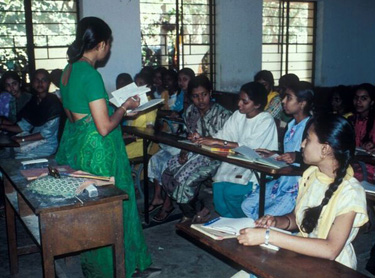
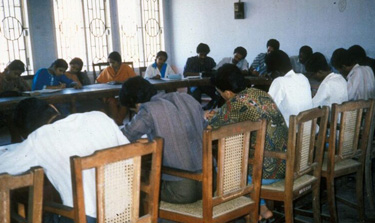
Sanctions, Sexuality, Honor, and Shame
Penalties for deviating from the rules of social separation vary across and within cultures. In small communities, neighbors and extended family kin can simply report inappropriate behavior, especially between unmarried young adults, to other family members. More severe and sometimes violent responses by family members can occur, especially if the family’s “honor” is involved—that is, if the young adults, especially girls, engage in activities that would “shame” or dishonor the family. Honor and shame are complex concepts that are often linked to sexuality, especially female sexuality, and to behavior by family members that involves or hints at sexual impropriety. The Turkish film Mustang, nominated for the 2016 best foreign film Academy Award, offers a good illustration of how concepts of sexualized honor and shame operate.
We hear in the news of “honor killings” carried out by conservative Muslims in countries such as Pakistan and powerfully portrayed in documentaries such as A Girl in the River: The Price of Forgiveness (2015).[31] But it is not just Islam. Some orthodox sectors of major religions, including Christianity, Judaism, and Hinduism, may hold similar views about “honor” and “shame” and impose sometimes violent sanctions against those who violate sexuality-related codes. The brutal 2012 gang rape-murder of a young woman on a bus in Delhi, though perpetrated by strangers, was rationalized by the men who committed the crime (and their defense attorney) as a legitimate response to the woman’s “shameful” behavior—traveling on a bus at night with a male friend, implying sexual impropriety.[32]
Social separation, sex-segregated schools, and penalties for inappropriate sexual behavior have also existed in the United States and Europe, especially among upper-strata women for whom female “purity” was traditionally emphasized. Chastity belts in Europe, whether or not actually used, symbolized the idea that a woman’s sexuality belonged solely to her husband, thus precluding her from engaging not only in premarital and extra-marital sex but also in masturbation (Figure 8).[33] In Nathaniel Hawthorne’s The Scarlet Letter, set in mid-sixteenth century Massachusetts, Hester was forced to wear a scarlet A on her dress and to stand on a public scaffold for three hours a day, a relatively nonviolent but powerful form of shaming and punishment. Stoning women to death for sexually inappropriate behavior, especially adultery, and other violent sanctions may have occurred in some European Christian and Jewish communities.

Rape, so frequent in warfare past and present, also can bring shame to the victim and her family, particularly in sexually conservative societies. During the 1971 Bangladesh war of independence against Pakistan, East Bengali women who were raped by soldiers were ostracized by their families because of the “shame” their rape had brought. During the partition of India into India and Pakistan in 1947, some Sikh families reportedly forced daughters to jump into wells to drown rather than risk being raped by strangers.[34]
Alternative Models of Gender: Complementary and Fluid
Not all binary cultures are gender-segregated; nor does gender hostility necessarily accompany gender separation. Nor are all binary cultures deeply concerned with, some might say obsessed with, regulating female sexuality and marriage. Premarital and extra-marital sex can even be common and acceptable, as among the !Kung San and Trobriand Islanders.[35] And men are not always clearly ranked over women as they typically are in stratified large-scale centralized societies with “patriarchal” systems. Instead, the two genders can be seen as complementary, equally valued and both recognized as necessary to society. Different need not mean unequal. The Lahu of southwest China and Thailand exemplify a complementary gender system in which men and women have distinct expected roles but a male-female pair is necessary to accomplish most daily tasks (Figure 9). A male-female pair historically took responsibility for local leadership. Male-female dyads completed daily household tasks in tandem and worked together in the fields. The title of anthropologist Shanshan Du’s book, Chopsticks Only Work in Pairs (1999), encapsulates how complementary gender roles defined Lahu society. A single chopstick is not very useful; neither is a single person, man or woman, in a dual-focused society.[36]
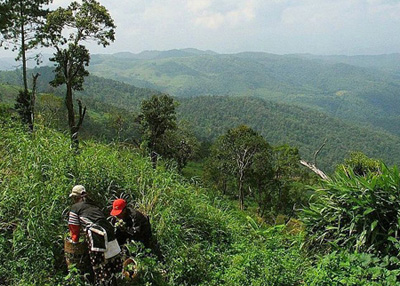
Like the Lahu, the nearby Na believe men and women both play crucial roles in a family and household. Women are associated with birth and life while men take on tasks such as butchering animals and preparing for funerals (Figures 10 and 11). Every Na house has two large pillars in the central hearth room, one representing male identity and one representing female identity. Both are crucial, and the house might well topple symbolically without both pillars. As sociologist Zhou Huashan explained in his 2002 book about the Na, this is a society that “values women without diminishing men.”[37]

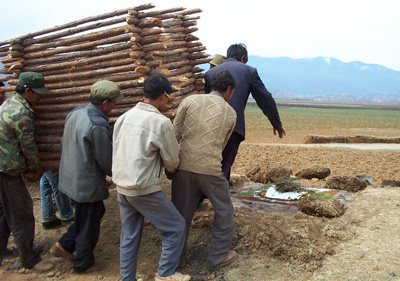
Anthropologists have also encountered relatively androgynous gender-binary cultures. In these cultures, some gender differentiation exists but “gender bending” and role-crossing are frequent, accepted, and reflect circumstances and individual capacities and preferences. Examples are the !Kung San mentioned earlier, Native American Washoe in the United States, and some segments of European societies in countries such as Sweden and Finland and, increasingly, in the United States.[38] Contemporary twenty-first century gender ideologies tend to emphasize commonality, not difference: shared human traits, flexibility, fluidity, and individual expression.
Even cultures with fairly well-defined gender roles do not necessarily view them as fixed, biologically rooted, permanent, “essentialist,” or “naturalized” as occurred in the traditional gender ideology in the United States.[39] Gender may not even be an “identity” in a psychological sense but, rather, a social role one assumes in a particular social context just as one moves between being a student, a daughter, an employee, a wife or husband, president of the bicycle club, and a musician.
Cultures also change over time through internal and external forces such as trade, conquest, colonialism, globalization, immigration, mass media, and, especially, films. Within every culture, there is tremendous diversity in class, ethnicity, religion, region, education level, and generation, as well as diversity related to more-individual family circumstances, predilections, and experiences. Gender expectations also vary with one’s age and stage in life as well as one’s social role, even within the family (e.g., “wife” vs. “sister” vs. “mother” vs. “mother-in-law” and “father” vs. “son” vs. “brother” vs “father-in-law”). Finally, people can appear to conform to cultural norms but find ways of working around or ignoring them.
Even in highly male-dominated, sexually segregated societies, women find ways to pursue their own goals, to be actors, and to push the boundaries of the gender system. Among Egyptian Awlad ‘Ali Bedouin families, for example, women rarely socialized outside their home compounds or with unrelated men. But within their spheres, they freely interacted with other women, could influence their husbands, and wrote and sang poetic couplets as expressive outlets.[40] In some of the poorest and least-developed areas of central India, where patrilocal extended-family male-controlled households reign, activist Sampat Pal has organized local rural women to combat violence based on dishonor and gender.[41] Her so-called “Gulabi Gang,” the subject of two films, illustrates both the possibilities of resistance and the difficulties of changing a deeply embedded system based on gender, caste, and class system (Figure 12).[42] For a related activity, see Activity 2: Understanding Gender from a Martian Perspective.
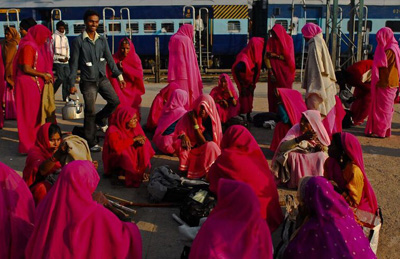
CONTEMPORARY ANTHROPOLOGICAL APPROACHES TO STUDYING SEXUALITY AND GENDER
Contemporary anthropology now recognizes the crucial role played by gender in human society. Anthropologists in the post-2000 era have focused on exploring fluidity within and beyond sexuality, incorporating a gendered lens in all anthropological research, and applying feminist science frameworks, discourse-narrative analyses, political theory, critical studies of race, and queer theory to better understand and theorize gendered dynamics and power. Pleasure, desire, trauma, mobility, boundaries, reproduction, violence, coercion, bio-politics, globalization, neoliberal “development” policies and discourses, immigration, and other areas of anthropological inquiry have also informed gender and sexuality studies. We next discuss some of those trends.[124]
Heteronormativity and Sexuality in the United States
In the long history of human sexual relationships, we see that most involve people from different biological sexes, but some societies recognize and even celebrate partnerships between members of the same biological sex.[125] In some places, religious institutions formalize unions while in others unions are recognized only once they result in a pregnancy or live birth. Thus, what many people in the United States consider “normal,” such as the partnership of one man and one woman in a sexually exclusive relationship legitimized by the state and federal government and often sanctioned by a religious institution, is actually heteronormative. Heteronormativity is a term coined by French philosopher Michel Foucault to refer to the often-unnoticed system of rights and privileges that accompany normative sexual choices and family formation. For example, a “biologically female” woman attracted to a “biologically male” man who pursued that attraction and formed a relationship with that man would be following a heteronormative pattern in the United States. If she married him, she would be continuing to follow societal expectations related to gender and sexuality and would be agreeing to state involvement in her love life as she formalizes her relationship.
Despite pervasive messages reinforcing heteronormative social relations, people find other ways to satisfy their sexual desires and organize their families. Many people continue to choose partners from the so-called “opposite” sex, a phrase that reflects the old U.S. bipolar view of males and females as being at opposite ends of a range of characteristics (strong-weak, active-passive, hard-soft, outside-inside, Mars-Venus).[126] Others select partners from the same biological sex. Increasingly, people are choosing partners who attract them—perhaps female, perhaps male, and perhaps someone with ambiguous physical sexual characteristics.
Labels have changed rapidly in the United States during the twenty-first century as a wider range of sexual orientations has been openly acknowledged, accompanied by a shift in our binary view of sexuality. Rather than thinking of individuals as either heterosexual OR homosexual, scholars and activists now recognize a spectrum of sexual orientations. Given the U.S. focus on identity, it is not surprising that a range of new personhood categories, such as bisexual, queer, questioning, lesbian, and gay have emerged to reflect a more-fluid, shifting, expansive, and ambiguous conception of sexuality and sexual identity.
Transgender, meanwhile, is a category for people who identify as a different gender than the one that was assigned to them at birth. This may entail a social transition or a physical one, using a number of methods. Anthropologist David Valentine explored how the concept of “transgender” became established in the United States and found that many people who were identified by others as transgender did not embrace the label themselves. This label, too, has undergone a profound shift in usage. By 2011, an estimated 8.7 million people in the United States identified as lesbian, gay, bisexual, and/or transgender.[128] These communities represent a vibrant, growing, and increasingly politically and economically powerful segment of the population. While people who identify as gay, lesbian, bisexual, and transgender—or any of a number of other sexual and gender minorities—have existed throughout the United States’ history, it is only since the Stonewall uprisings of 1969 that the modern LGBT movement has been a key force in U.S. society.[129] Some activists, community members, and scholars argue that LGBT (lesbian, gay, bisexual, and/or transgender) is a better choice of labels than GLBT since it puts lesbian identity in the foreground—a key issue because the term “gay” is often used as an umbrella term and can erase recognition of individuals who are not gay males. Recently, the acronym has been expanded to include LGBTQ (queer or questioning), LGBTQQ (both queer and questioning), LGBTQIA (queer/questioning, intersex, and/or asexual), and LGBTQAIA (adding allies as well).
Like the U.S. population overall, the LGBTQ community is extremely diverse. Some African-Americans prefer the term “same-gender loving” because the other terms are seen as developed by and for “white people.” Emphasizing the importance and power of words, Jafari Sinclaire Allen explains that “same-gender loving” was “coined by the black queer activist Cleo Manago [around 1995] to mark a distinction between ‘gay’ and ‘lesbian’ culture and identification, and black men and women who have sex with members of the same sex.”[130] While scholars continue to use gay, lesbian, and queer and the U.S. Centers for Disease Control uses MSM (men who have sex with men), “same-gender loving” resonates in some urban communities.
Not everyone who might fit one of the LGBTQQIA designations consciously identifies with a group defined by sexual orientation. Some people highlight their other identities, as Minnesotans, for example, or their ethnicity, religion, profession, or hobby—whatever they consider central and important in their lives. Some scholars argue that heteronormativity allows people who self-identify as heterosexual the luxury of not being defined by their sexual orientation. They suggest that those who identify with the sex and gender they were assigned at birth be referred to as cisgender.[131] Only when labels are universal rather than used only for non-normative groups, they argue, will people become aware of discrimination based on differences in sexual preference.
Though people are urging adoption of sexual identity labels, not everyone is embracing the move to self-identify in a specific category. Thus, a man who is attracted to both men and women might self-identify as bisexual and join activist communities while another might prefer not to be incorporated into any sexual-preference-based politics. Some people prefer to eliminate acronyms altogether, instead embracing terms such as genderfluid and genderqueer that recognize a spectrum instead of a static identity. This freedom to self-identify or avoid categories altogether is important. Most of all, these shifts and debates demonstrate that, like the terms themselves, LGBTQ communities in the United States are diverse and dynamic with often-changing priorities and makeup.
Sexuality Outside the United States
Same-sex sexual and romantic relationships probably exist in every society, but concepts like “gay,” “lesbian,” and “bisexual” are cultural products that, in many ways, reflect a culturally specific gender ideology and a set of beliefs about how sexual preferences develop. In many cultures (such as the Sambia discussed above), same-sex sex is a behavior, not an identity. Some individuals in India identify as practicing “female-female sexuality” or “male-male sexuality.” The film Fire by Mira Nair aroused tremendous controversy in India partly because it depicted a same-sex relationship between two married women somewhat graphically and because it suggested alternatives available to women stuck in unhappy and abusive patriarchal marriages.[139] Whether one is “homosexual” or “heterosexual” may not be linked simply to engaging in same-sex sexual behavior. Instead, as among some Brazilian males, your status in the sexual relationship, literally and symbolically, depends on (or determines!) whether you are the inserter or the penetrated.[140] Which would you expect involves higher status?
Even anthropologists who are sensitive to cross-cultural variations in the terms and understandings that accompany same-sex sexual and romantic relationships can still unconsciously project their own meanings onto other cultures. Evelyn Blackwood, an American, described how surprised she was to realize that her Sumatran lover, who called herself a “Tombois,” had a different conception of what constituted a “lesbian” identity and lesbian relationship than she did.[141] We must be careful not to assume that other cultures share LGBTQ identities as they are understood in the United States and many European countries.
Furthermore, each country has its own approach to sexuality and marriage, and reproduction often plays a central role. In Israel, an embrace of pro-natalist policies for Jewish Israelis has meant that expensive reproductive technologies such as in vitro fertilization are provided to women at no cost or are heavily subsidized. An Israeli gay activist described how surprised queer activists from other countries were when they found that nearly all Israeli female same-sex couples were raising children. (This embrace of same-sex parenting did not extend to male couples, for whom the state did not provide assisted reproductive support.) The pro-natalist policies can be traced in part to Israel’s emergence as a state: founded in the aftermath of persecution and systematic genocide of Jewish residents of Europe from 1937 through 1945, Israel initially promoted policies that encouraged births at least in part as resistance to Nazi attempts to destroy the Jewish people. The contexts may be less dramatic elsewhere, but local and national histories often inform policies and practices.
In Thailand, Ara Wilson has explored how biological women embrace identities as toms and dees. Although these terms seem to be derived from English-language concepts (dees is etymologically related to “ladies”), suggesting international influences, the ubiquity and acceptance of toms and dees in Thailand does diverge from patterns in the United States.[142]
In China (as elsewhere), the experiences of those involved in male-male sexuality and those involved in female-female sexuality can differ. In her book Shanghai Lalas: Female Tongzhi Communities and Politics in Urban China, Lucetta Yip Lo Kam discusses how lesbians in China note their lack of public social spaces compared with gay men.[143] Even the words lala and tongzhi index different categories from the English terms: lala encompasses lesbian, bisexual, and transgendered people while tongzhi is a gloss term that usually refers to gay men but has been expanded in the last two decades to other uses. (Tongzhi is a cooptation of the Chinese-language socialist-era term for comrade.)
Language makes a difference in how individuals and communities articulate their identities. Anthropologists such as Kam have commented on how sharing their own backgrounds with those with whom they work can be instrumental in gaining trust and building rapport. Her identity as a Chinese-speaking queer anthropologist and activist from Hong Kong helped women in Shanghai feel comfortable speaking with her and willing to include her in their networks.[144]
From these examples, we see that approaches to sexuality in different parts of the world are evolving, just as gender norms in the United States are undergoing tremendous shifts. Anthropologists often cross boundaries to research these changes, and their contributions will continue to shape understandings of the broad range of approaches to sexuality.
Anthropology of the Body
Another important topic for anthropologists interested in gender and sexuality is the anthropology of the body, sometimes referred to as embodied anthropology. Viewing the human body as an analytic category offers exciting new theoretical possibilities.[145] Topics that have attracted particular attention include popular and scientific representations of the body; (dis)ability; the anthropology of obesity; the politics of reproduction; coercion; complex issues associated with genital modifications such as female circumcision; and the relationship between bodies and borders.[146] Who can cross which lines physically (think about national borders), emotionally, psychologically, and socially? Embodied anthropology foregrounds these questions.
Anthropologists increasingly write about their own experiences using an auto-ethnographic mode. For example, Pamela Runestad examined how her time as a patient in a Japanese maternity ward influenced her understanding of the importance of carefully crafted meals and nutrition for HIV/AIDS patients.[147] In subsequent research on HIV/AIDS in Japan, she probed more deeply into how patients’ nourishment inside and outside clinical settings affected their perceptions of health.
Anthropology of the body overlaps with work on gender and sexuality, including the discourse surrounding women’s bodies and reproductive functions. Emily Martin’s pioneering book, The Woman in the Body, critically examined lay women and medical descriptions of menstruation, child-bearing, and menopause in the United States. She identified a scientific ideology of reproduction that is infused with traditional U.S. binary gender stereotypes similar to those in man-the-hunter origin stories. In her classic essay about what she calls a “scientific fairy tale,” Martin describes how U.S. biology texts represented the egg and sperm as romantic partners whose actions are described with passive or active verbs according to gendered assumptions.[148]
I realized that the picture of egg and sperm drawn in popular as well as scientific accounts of reproductive biology relies on stereotypes central to our cultural definitions of male and female. The stereotypes imply not only that female biological processes are less worthy than their male counterparts but also that women are less worthy than men. Part of my goal in writing this article is to shine a bright light on the gender stereotypes hidden within the scientific language of biology.[149]
Subsequent work has challenged the “sperm penetrates egg” model of fertilization, noting that it is medically inaccurate and reinforces male-active-dominant, female-passive (penetrated) gender models. In reality, the egg and sperm fuse, but the egg activates the sperm by releasing molecules that are crucial for it to find and adhere to the egg.[150] Old videos like The Miracle of Life offer, in their narration and background music, striking examples of the cultural ideology of reproduction in the United States that Martin and others have described.[151]
In another classic essay, Corinne Hayden explored interactions between biology, family, and gender among lesbian couples. Even though both members of the lesbian couples she studied did not necessarily contribute biologically to their offspring, the women and their families found ways to embrace these biological differences and develop a new formulation of family that involved biological connection but was not limited to it.[152]
Some research analyzes the body, especially the female body, as a site of coercion and expression of power relations by individuals (e.g., partner rape and domestic violence), but state-sanctioned collective acts also occur, such as using women as “sex slaves” (Japan’s so-called “Comfort Women” during World War II) and using civilian rape as a form of psychological warfare. Anthropologists document other ways in which states exert power over bodies—through family planning policies (China’s planned birth policy), legislation that bans (or permits) artificial forms of contraception and abortion, and government programs to promote fertility, including subsidized infertility treatments.[153] For example, Turkish anthropologists have described how state policies in Turkey have appropriated, for state purposes, sexual issues of concern to Turkish families, such as assisted reproduction for disabled war veterans and treatment of vaginismus, a condition that prevents women from engaging in sexual intercourse. Power relationships are also associated with new reproductive technologies. For example, the availability of amniocentesis often contributes to shifts in the ratio of male and female babies born. Unequal power relations are also in play between surrogate mothers (often poor women) and wealthier surrogate families desiring children.[154]

